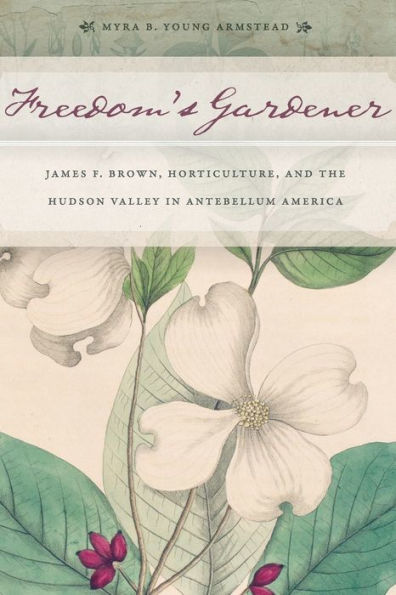
Freedom's Gardener: James F. Brown, Horticulture, and the Hudson Valley in Antebellum America
219
Freedom's Gardener: James F. Brown, Horticulture, and the Hudson Valley in Antebellum America
219Paperback
-
PICK UP IN STORECheck Availability at Nearby Stores
Available within 2 business hours
Related collections and offers
Overview
In 1793 James F. Brown was born a slave, and in 1868 he died a free man. At age 34 he ran away from his native Maryland to pass the remainder of his life as a gardener to a wealthy family in the Hudson Valley. Two years after his escape and manumission, he began a diary which he kept until his death. In Freedom’s Gardener, Myra B. Young Armstead uses the apparently small and domestic details of Brown’s diaries to construct a bigger story about the transition from slavery to freedom.
In this first detailed historical study of Brown’s diaries, Armstead utilizes Brown’s life to illuminate the concept of freedom as it developed in the United States in the early national and antebellum years. That Brown, an African American and former slave, serves as such a case study underscores the potential of American citizenship during his lifetime.

Product Details
| ISBN-13: | 9781479825233 |
|---|---|
| Publisher: | New York University Press |
| Publication date: | 06/22/2013 |
| Pages: | 219 |
| Sales rank: | 480,122 |
| Product dimensions: | 5.90(w) x 8.90(h) x 0.80(d) |
About the Author
Table of Contents
Acknowledgments
Introduction
Part I. LIFE AS A SLAVE
1.What Can a Man Do?
2.Into the Promised Land
Part II. FREE MAN AND FREE LABORER
3.A Horticultural Community
4. A Gardening Career
5. Cultural Meanings of Gardening
6. Escaping Wage Slavery
Part III. FREE MAN AND CITIZEN
7. A Whiggish Sensibility
8. James F. Brown, Voting Rights Politics, and Antislavery Activism
9. The Informal Politics of Association
Conclusion
Notes
About the Author
What People are Saying About This
"Myra Young Armstead brings to life James Brown, a self-possessed African American citizen of the pre-Civil War United States, and gives us a new understanding of the meaning of freedom in antebellum America. As a master gardener in rural upstate New York, James Brown charted a life of complex alliances across racial lines and advocacy on behalf of fellow African Americans. Armstead's wonderful work of recovery illuminates a path to freedom in the rural North that we have known little about."
-Leslie M. Harris,Emory University
"This is far more than a book about a gardener–though it is a fascinating story about nineteenth-century American horticulture. Freedom’s Gardener tells us about the opportunities and limits that framed the lives of African Americans in places like New York’s Hudson Valley. And a good read to boot.”
-James Grossman,University of Chicago
"Armstead explores the meaning of northern African American identity through her deft decoding of a ten-volume diary left by James F. Brown... Recommended for historians of antebellum America or the social aspects of horticulture and for those interested in historical diaries. Incipient researchers will learn the differences among term, life, and wage slaves and much else." -Library Journal,
"With this meticulously sourced and carefully reasoned portrait, Armstead reclaims an outstanding American who helped freedom grow."-Booklist,
This in-depth study of the life of an African American slave turned master gardener is an enlightening examination of a period of American history that seems to have slipped from public scrutiny in recent years."-Marilyn K. Alaimo, garden writer,Chicago Botanic Garden
